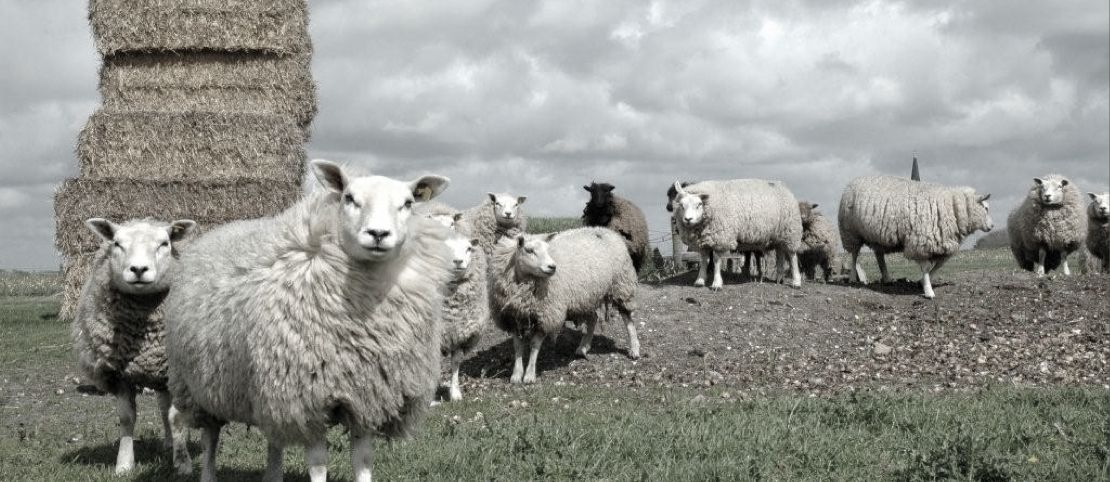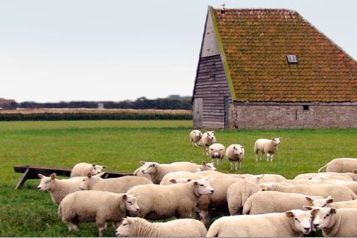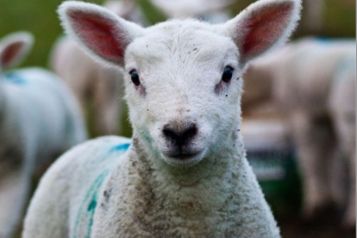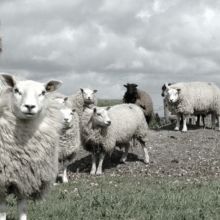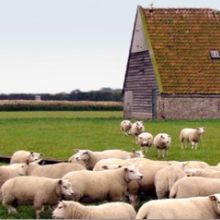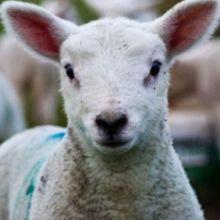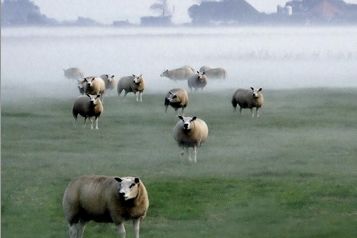Shear it with the world.
The secret of Texeler
Texeler combines pure wool with the latest and most advanced production techniques. The pure wool from the Texel sheep is famous for its warmth and ventilation. The lanolin (wool fat) ensures that the wool fibers remain flexible and resilient. With the best machines and a unique needling system, we create products that allow you to experience the beautiful qualities of wool every day in your own bed.
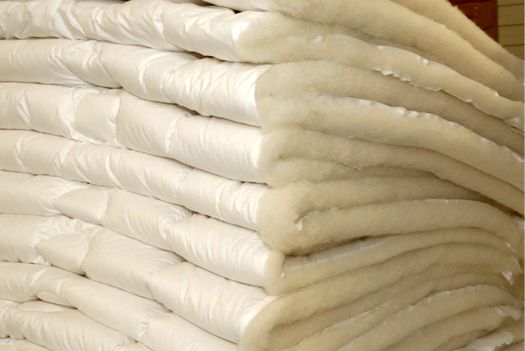
Unique production process
Texeler has a long history of producing woolen blankets. The Texel wool is already perfect by nature, but we always strive for innovation and improvement. This resulted in a unique needling process that is only applied by Texeler. It is a special technique in which the wool fibers are woven both horizontally and vertically, making the wool even airier and better ventilating. This results in futons and blankets with perfect resilience and ventilation properties, anywhere in the world. This way you can sleep wonderfully airy, both above and below the wool!
Trademarks
Texeler is certified by a large number of brands. One of the trademarks is 'Waddengoud'. Texeler is the first to deliver a sheep wool collection with the 'Waddengoud' trademark. This sheep wool is guaranteed to come from the Wadden area. Small-scale sheep farms supply the wool. Attention is paid to animals, landscape, and the environment during the production process. Texeler is also Woolmark and organic certified.

The Texeler Sheep Breed
The history of the Texel sheep dates to around 1850. The animal was mainly kept for milk and wool at the time. Texel breeders further developed the breed. In 1909, the breed description was included in the Texel Sheep Studbook. The 'Texelaar' was born! The ultimate sheep with the finest wool coat of fine fibers. The rougher the climate, the better the wool.
The high humidity on the island of Texel, combined with salty sea winds, has resulted in a particularly long curly coat with a remarkably high content of lanolin (wool fat). Due to this long curl, the wool of the 'Texelaar' has a unique thermostatic regulation; it retains heat very well and ventilates. The blanket is therefore nice and cool in the summer and warm in the winter. The wool of the Texel sheep is a natural product and is particularly suitable for use in blankets, underblankets, pillows, and futons.
Sheep Shearing
The sheep are usually sheared in the spring. They are gathered and then one by one relieved of their winter coat. TexelWool and Texeler select the best wool on the island. That starts in the field. A professional shears up to about 150 sheep per day. In an average of 4 minutes, the sheep lose their full coat. The sheep shearer keeps dirty parts of the wool separate; he also chooses only white wool.
Large bales of wool are weighed in the farm shed. It is then sorted by hand. We look at properties such as color, fiber length, fineness, curl, and beauty. The selected wool is then transported in bags of 1000 kg to be washed. No unnatural means are used during this entire process, and the sheep enters the summer with a shorn body.
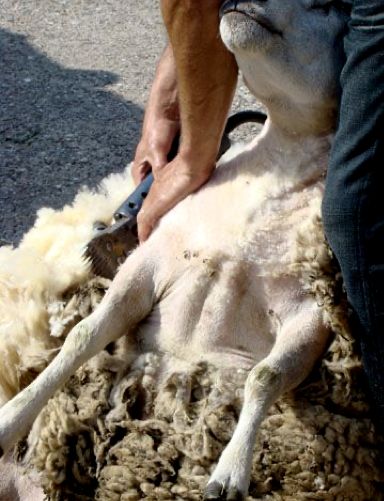
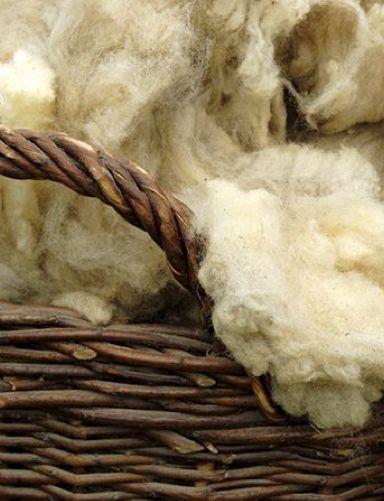
Washing the wool
After careful selection, the wool is transported to Belgium by truck to the company Traitex, which washes the wool naturally without chemicals. The wool that comes from a sheep is contaminated with grease, sweat, grass, and other plant residues. Washing the wool removes the dirt. However, for spinning, it is useful if the wool is still somewhat greasy.
After washing, the wool is dried and blown to the "wool loft" to acclimate for at least 24 hours. Meanwhile, a sample is taken from each bale of wool for testing in the laboratory. Each bale is given its own number. Once the results of the quality test are known and meet the high standards set by Texeler and TexelWool, it is transported to the factory on Texel in bales by truck. The wool is then ready for processing in our factory in the harbor town of Oudeschild.
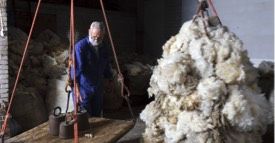
Beginning of the production process
Upon arrival at the factory, the wool is inspected and then carded. This untangles the fibers. Carding is done with a comb with steel points. Machine carding is done with a fast-rotating cylinder equipped with steel points or even a needle bed. With carding, the last remnants of dirt are also removed and disposed of in the special "dirt vacuums'' that are above the carding machine. After carding, spinning can be done immediately if desired. However, for a finer result, the wool must first be combed. To obtain better regularity in the final yarn, various stretching and doubling passages must also be applied, whereby the thread becomes increasingly regular and thinner.
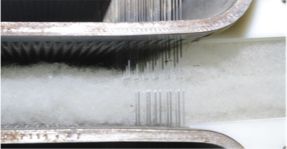
The needling process
Due to the climate on Texel, Texeler sheep have a longer coat than any other sheep breed: a particularly long and curly fleece with a remarkably high content of lanolin. After the carding process and the wool fleeces are made, the fleeces are needled. This unique system, which is only applied at the Texeler/TexelWool factory, ensures that the wool is needled vertically, resulting in an even more airy, ventilating, and resilient product. Compared to "normal" wool blankets, the needled blanket feels much lighter and has much more resilience. It can therefore be compared to a down blanket in terms of weight.
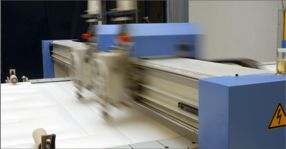
Sewing the cover and wool together
After the wool has been scoured, the fleece is rolled into large rolls and attached to the sewing machine that sews the wool and cover together. A good cover must, of course, be lightweight and supple. Once the choice of cover has been made, it is sewn together with the processed wool. All of this is done on the various sewing machines present in the factory. The most advanced machine is computer-controlled and can incorporate logos or other patterns into the blanket. The other sewing machines can sew vertical patterns in one go and can thus produce at a higher rate. The temperature and humidity are always closely monitored during production so that the wool can be processed optimally.
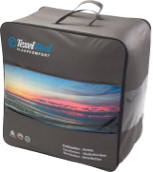
Packaging
When the blanket is finished and carefully inspected, it is packed in a bag. Depending on the type of blanket, it is packaged in the appropriate bag. The bag is equipped with handy handles so that the blanket can also be taken on vacation. If there are multiple blankets, the bags are packaged in matching boxes that are tailor-made. These boxes are then placed on a pallet and sealed with plastic so that transportation will not damage the blankets.

To the customer
Once the final product is ready, it can be ordered. There are many possibilities to create the desired product for the customer. Texel Export takes care of the entire process from start to finish, thanks to many years of experience with Japan and the export industry, you can be assured that Texel Export will deliver the products as agreed upon.
Our products are
Ready to ship within 48 hours
Shipped with express service
Located on Texel
Fully certified
